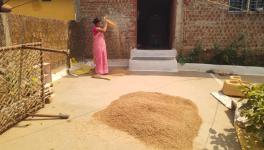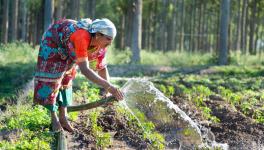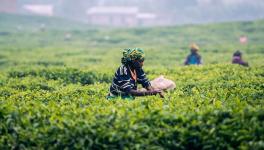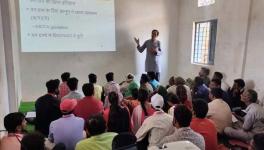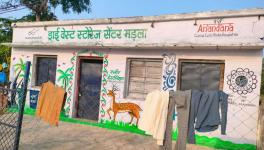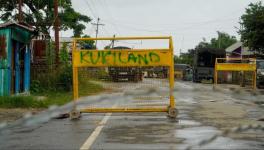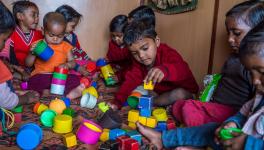The White Tiger Girls
Malnutrition is a big contributor to the low child sex ratio in Rewa district of Madhya Pradesh. The girls of the Kol tribe are suffering.
The first white tiger, Mohan, ever found in natural history was in the jungles of Govindgarh in Rewa district in Madhya Pradesh in 1951. It was caught by the then king and imprisoned in his palace till its death. Located in the northeast part of the state, Rewa has the highest population of important tribes like Kol, Korku, Sahariya and Baiga. It also has the worst child sex ratio in the country, at 885 females per 1000 males and according to the Asian Human Rights Commission, 80 percent of the children in Rewa district are malnourished. While popular understanding of declining sex ratio is often attributed to sex selective abortions, the major reason is often gender disparity in the food budget of the family.
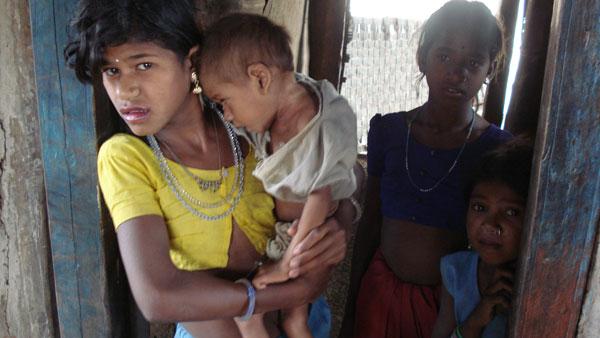
Last week, the number of dead children in the forest village of Dhurkuch of Jawa Block in Rewa district, reached a double figure. In the last two months, ten children, under the age of six, passed away because of various ailments due to malnutrition. In a family of six, Meena was the second youngest. She, 6 and her brother Ashu, 4, were both malnourished as informed by the supervisor at the Nutritional Rehabilitation Centre. Their father, Raghu was advised to take care of the nutritional requirements of both. Meena passed away two months later, Ashu survived. Raghu and family belong to the Kol community. It is a landless tribe classified as Schedule Tribe under the Indian constitution. In the last one year, Raghu got only 20 days employment under NREGA, the rural employment scheme. On odd days, he has managed to get work as a daily wage labourer in a limestone mine in the vicinity. Making ends meet was anyway a challenge. Gender based food consumption patterns suggest a natural male bias. Sita’s case, four houses away from Meena’s, throws more light.
Sita, 7, lost her eyesight ten days back. She is one of the 23 identified malnourished children in the village. 17 out of these 23 are girls. Sita’s father, Mukesh is also a landless labourer from the Kol tribe. With an absence of means of livelihood, raising a family of eight, four sons and two daughters, Sita is clearly the last on the priority list of the food budget. “Her’s is a clear case of malnutrition. Apart from lost eyesight, she is severely underweight. She may not last more than a month if she is not provided proper nutrition,” says RN Dwivedi, the Child Development Project officer in the Jawa block. Dwivedi further recounts that out of every ten cases of child malnutrition from this block, seven are girls.
According to the HungaMA (Hunger and Malnutrition report) 2013, ‘Girls’ nutrition advantage over boys fades away with time: Girls seem to have a nutrition advantage over boys in the first months of life; however this advantage seems to be reversed over time as girls and boys grow older, potentially indicating feeding and care neglect vis-à-vis girls in infancy and early childhood’. The factors that lead to gender based health expenditure need to be further explored.
Firstly, there is no Public Distribution Shop in the vicinity of this village with a population of 900 people. They get no access to subsidized ration unless they walk to the closest shop, which is in Gaiduraha village, 11 km away. “Those who have ration cards, which are few, have to cross the forest to go to the next village to buy the ration,” informs Kamlesh, a member of the gram panchayat in Dhurkuch.
Secondly, the staple food of the Kols is boiled rice and boiled green vegetables. They eat a variety of pulses like Urad, Kurthi, Rahar, Bodi and Barai. The vegetables include Onion, brinjal, radish, tomato, potato, pumpkin and gourds. Kamlesh goes on to tell, “The ration shops only provide sugar, rice and kerosene. For everything else, the villagers have to buy it at a high price.” This situation is an axe attack on the nutritional requirement and availability for the community. Apart from 30 families, all the residents belong to the Kol community. Since the community is landless, they need to buy vegetables too, as opposed to the landed who home-grow vegetables for consumption. The PDS fails to address the food requirements of the tribal community.
It is noteworthy that year after year, the various collectors of Rewa and the Madhya Pradesh government have denied malnutrition deaths in the state. It is important to remember that malnutrition makes up for 22% of India’s disease burden because it severely weakens a child’s immune system, raising their mortality rates from common diseases such as pneumonia, malaria, measles and diarrhea. A report in July 2013, from the pediatric department of a government hospital in Rewa district, indicates that out of the 104 severe acute malnourished children 54 percent had diarrhea, 28 percent had acute respiratory tract infections, 3 percent were HIV positive, 4 percent each had measles and malaria, 22 percent had tuberculosis, out of which 61 percent children were 6 to 12 months old and vitamin deficiency was seen in 22 percent children. It is only grotesque that the government and administration, with all its research machinery then refuses to connect malnutrition deaths with deaths due to other ailments.
Children who have been malnourished in the first 5 years of life will have limited mental and physical growth capacity as compared to a well-nourished child. Malnutrition severely affects the body: it can stunt the normal growth of children and cause children to be underweight for their age. It can also lead to wasting or severe weight loss and can cause severe deficiency in key vitamins and minerals, such as anaemia or iron deficiency. There is evidence that a malnourished child will someday have children with low birth weights, perpetuating the cycle of malnutrition.
Malnutrition does not affect children alone, even though children die in greater number than adults due to the complications arising from malnutrition. National Family Health Survey (NFHS-2005-06), selected findings of which are given below, shows that adults especially women are equally affected by malnutrition which reflects in their low Body Mass Index (BMI). This survey also throws light on the anaemia prevalence among children in Madhya Pradesh.
To refer to HungaMa report 2013 again, ‘By the time girls are 4 years old, they are much more likely to be stunted and underweight than their brothers.’ This further contextualizes the abysmally low child sex ratio of Rewa. Kol community is a patriarchal, nomadic tribe. It has been given the tribe status by Madhya Pradesh as opposed to the Centre government that has classified them under the Schedule Caste category. Landless and dismayed by the rocky terrain- that makes cultivation difficult- the Kols settle down close to silica mines, crushing stones. A large number of them have contracted lung diseases like silicosis and tuberculosis. Ramesh, who crossed over to UP’s Shankargarh block in Allahabad explains, “We did not have ration cards because of lack of residence proof. Many children had to eat mud for days because of no means for survival.” This is in 2010. The report created a national stir and the Supreme Court intervened for Uttar Pradesh to take rehabilitative measures. “I am back to my village. It has been a year and yet nothing has changed. When there is nothing to feed the boys, how can there be anything to feed the girls.” In this light it is also significant that traditionally women eat after the male members of the family finish eating their meals in Kol community.
To add to it, the major concern of the Kol community remains the forest department’s restrictions on the use of forest produce. They require permission to plant or use trees such as neem, amla and mahua. Kamla, a local resident of the Dhurkuch village says, “ The authorities harass us even if we collect the twigs and barks and sell them.” Reports suggest that at least eight Kols have been booked by the forest department for carrying wood for sale. This becomes the biggest mockery of tribal rights, especially for a tribe that are primarily forest dwellers.
Though malnutrition is a district-wide phenomenon, out of the nine blocks in Rewa district, only four — Jawa, Teothar, Mauganj and Sirmour — have a Nutritional Rehabilitation Centre. However, it is hardly of any help. Dwivedi says, “The block Nutrition Rehabilitation Centre (NRC) is severely ill-equipped and under-staffed to address the problem effectively. The Infant Mortality Rate (IMR) here could be anywhere around 85-90, with the maximum percentage of the girl child.”
According to the National Family Health Survey, “Of the 1.2 crore girls born in India every year, as many as 30 lakh do not live to celebrate their 15th birthday.” Rewa is definitely adding to these numbers. Mohan, the white tiger from Rewa, caught in the forest where Kol community once dwelled, symbolizes the plight of the young girls. The White tiger girls of Rewa, away from the jungle are imprisoned by malnutrition too, till death.
(This story is fourth in the six part series on malnutrition. It has been facilitated under the One World-POSHAN fellowship grant.) Others in the series:
http://newsclick.in/india/organised-marginalisation
http://newsclick.in/india/racing-rats-or-racing-food
http://newsclick.in/india/when-patriarchy-scheme-conquer-malnutrition
Disclaimer: The views expressed here are those of the author, and do not necessarily represent the views of Newsclick.
Get the latest reports & analysis with people's perspective on Protests, movements & deep analytical videos, discussions of the current affairs in your Telegram app. Subscribe to NewsClick's Telegram channel & get Real-Time updates on stories, as they get published on our website.









